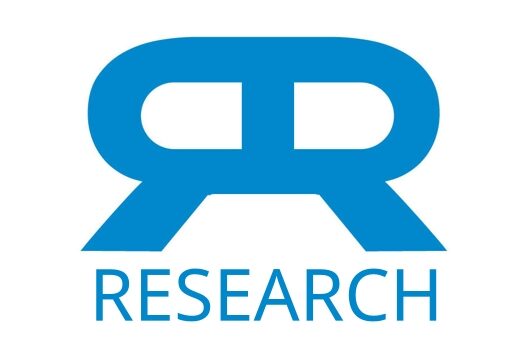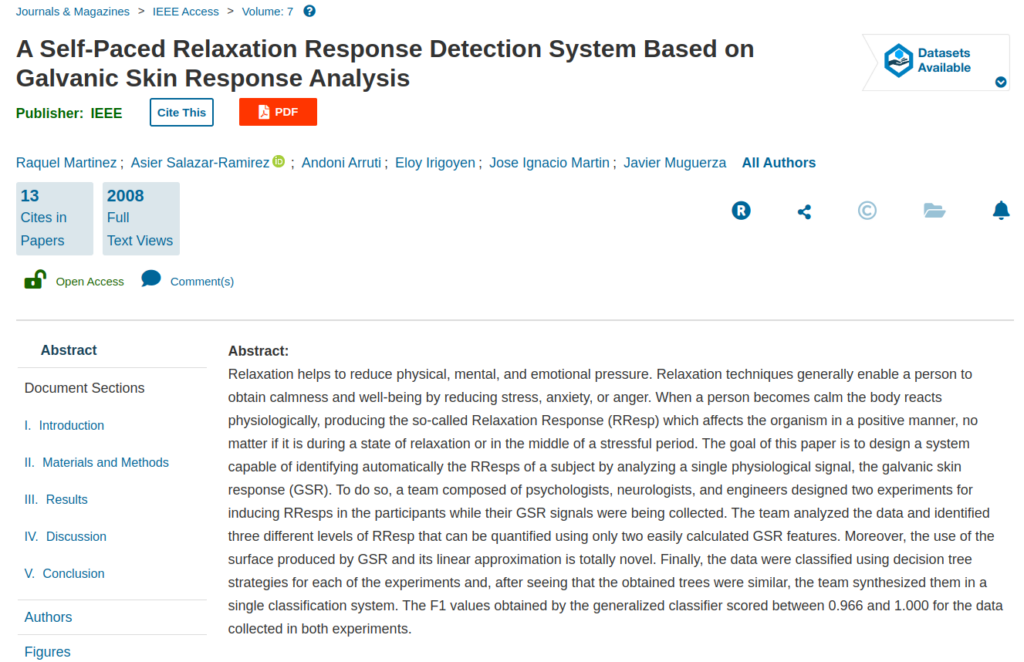Relaxation helps to reduce physical, mental, and emotional pressure. Relaxation techniques generally enable a person to obtain calmness and well-being by reducing stress, anxiety, or anger. When a person becomes calm the body reacts physiologically, producing the so-called Relaxation Response (RResp) which affects the organism in a positive manner, no matter if it is during a state of relaxation or in the middle of a stressful period. The goal of this paper is to design a system capable of identifying automatically the RResps of a subject by analyzing a single physiological signal, the galvanic skin response (GSR). To do so, a team composed of psychologists, neurologists, and engineers designed two experiments for inducing RResps in the participants while their GSR signals were being collected. The team analyzed the data and identified three different levels of RResp that can be quantified using only two easily calculated GSR features. Moreover, the use of the surface produced by GSR and its linear approximation is totally novel. Finally, the data were classified using decision tree strategies for each of the experiments and, after seeing that the obtained trees were similar, the team synthesized them in a single classification system. The F1 values obtained by the generalized classifier scored between 0.966 and 1.000 for the data collected in both experiments.
A Self-Paced Relaxation Response Detection System Based on Galvanic Skin Response Analysis
Publication
IEEE Access
Vol 7, pp. 43730 - 43741
Abstract
Web and Email Links
Related Listings
Journal
Journal of Human Stress
Oxygen consumption is usually considered to be predictable and unalterable at a fixed work intensity. The relaxation response is hypothesized to be an integrated hypothalamic response which results in generalized decreased sympathetic nervous system activity. One physiologic manifestation of the relaxation response is decreased oxygen consumption. The possibility that the elicitation of the relaxation response could decrease oxygen consumption at a fixed work intensity was investigate […]
Journal
The Lancet
A wakeful hypometabolic state may be induced by simple, non-cultic mental techniques or by traditional meditational practices. The hypometabolic state seems to represent an integrated hypothalamic response ("relaxation response") which is consistent with a state of decreased sympathetic-nervous-system activity. A prospective investigation was designed to test whether regular elicitation of the relaxation response might lower blood-pressures in hypertensive patients who were maintained […]
Journal
Journal of Human Stress
The efficacy of the regular elicitation of the relaxation response in reducing surgical anxiety and pain in an ambulatory surgery setting was studied in a population of patients scheduled for the surgical removal of a skin cancer. Forty-nine patients with skin cancer were enrolled in the study immediately after being informed of the ned for surgery; 21 of these patients elicited the relaxation response 20 minutes per day until the day of surgery, 21 read for 20 minutes per day, and 7 […]

